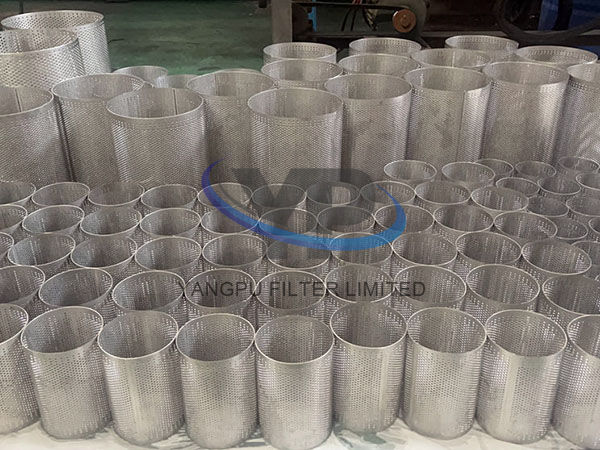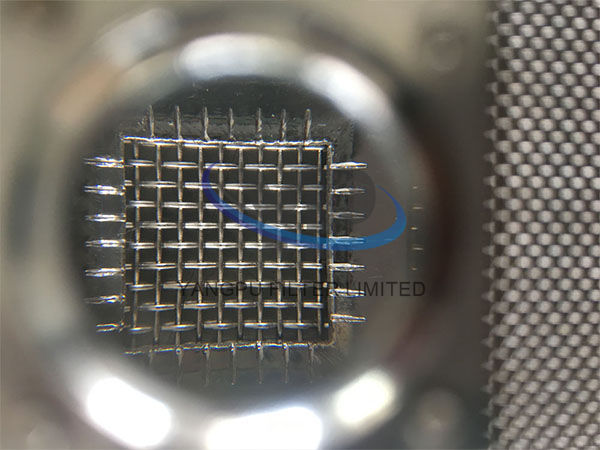How to choose the appropriate size of the filter?
Choosing the appropriate size of a stainless steel filter involves considering multiple factors related to the application, fluid properties, and system requirements. Below is a step-by-step guide to help you select the right filter size:
1. Determine Key Operational Parameters
Flow Rate (Q)
- Definition: The volume of fluid passing through the filter per unit time (e.g., m³/h, L/min, GPM).
- How to Measure:
- For existing systems, use flow meters or design specifications.
- For new systems, calculate based on process requirements (e.g., production capacity, pump output).
- Critical Consideration: The filter’s maximum flow rate capacity must exceed the system’s peak flow to avoid pressure drops and bottlenecks.
Pressure and Pressure Drop (ΔP)
- Inlet Pressure: The pressure of the fluid entering the filter (e.g., 10 bar).
- Allowable Pressure Drop: The maximum pressure loss acceptable across the filter (typically 0.5–2 bar for most systems).
- Formula: ΔP = Inlet Pressure – Outlet Pressure.
- Impact: A larger filter size reduces ΔP by providing more filtration area, but excessive size increases costs and space requirements.
Viscosity of the Fluid
- Effect: Higher viscosity fluids (e.g., oils, syrups) require larger filter sizes to maintain flow rate, as they flow more slowly through the media.
- Unit: Measured in centipoise (cP) or Pascal-seconds (Pa·s).
- Tip: Use viscosity charts or consult the filter manufacturer for size recommendations for viscous fluids.
2. Define Filtration Requirements
Filtration Precision (Micron Rating)
- Definition: The smallest particle size the filter can remove (e.g., 5 microns, 20 mesh).
- How to Choose:
- Match the micron rating to the application’s purity needs:
- Water treatment: 10–100 microns for coarse filtration; 0.1–5 microns for ultrafiltration.
- Oil systems: 1–20 microns to protect pumps and valves.
- Rule: Smaller micron ratings require more filter media surface area, often necessitating a larger filter size.
Particle Concentration
- Definition: The amount of contaminants in the fluid (e.g., mg/L, PPM).
- Impact: Higher contaminant loads require larger filter sizes or higher dirt-holding capacity (e.g., pleated filters vs. simple mesh filters).
- Key Term: Dirt-Holding Capacity (DHC): The maximum weight of contaminants a filter can retain before clogging. Larger filters have higher DHC.
3. Consider Physical and Environmental Constraints
Space and Installation
- Available Space: Ensure the filter fits within the system’s footprint (height, diameter, pipe connections).
- Installation Type:
- In-Line Filters: Require straight pipe sections before/after the filter to maintain flow stability.
- Tank-Mounted Filters: Space constraints may limit filter size.
Temperature and Corrosion
- Temperature: High-temperature fluids (e.g., steam, hot oil) may require heat-resistant stainless steel grades (e.g., 316L, 304) and affect seal materials.
- Corrosion: Aggressive fluids (e.g., acids, seawater) demand corrosion-resistant alloys, but this may not directly impact size unless combined with other factors (e.g., high flow + corrosion = larger stainless steel housing).
4. Select Filter Type and Design
Filter Media and Structure
- Common Types:
- Mesh Filters: Coarse filtration (e.g., 20–500 mesh), suitable for large particles.
- Cartridge Filters: Fine filtration (0.1–100 microns), available in pleated (higher surface area) or string-wound designs.
- Sintered Filters: High-strength, suitable for high-pressure or high-temperature applications.
- Impact on Size: Pleated cartridges or multi-element filters offer larger filtration area in a compact size compared to simple mesh filters.
Flow Pattern
- Direction:
- Radial Flow: Fluid flows from the outside to the inside of a cartridge (common in high-flow systems).
- Axial Flow: Fluid flows through the length of the filter (suitable for low-flow, high-precision applications).
- Tip: Radial flow designs often allow smaller physical sizes for the same flow rate due to higher surface area.
5. Use Manufacturer Guidelines and Calculations
Filter Capacity Charts
- Most manufacturers provide charts linking filter size to flow rate, pressure drop, and micron rating. For example:
- A 10-inch cartridge filter with a 5-micron rating may handle 5 GPM, while a 20-inch cartridge handles 10 GPM.
- Example Calculation:
- Required flow rate = 15 GPM.
- Manufacturer’s data: 10-inch cartridge = 5 GPM, 20-inch = 10 GPM.
- Solution: Use three 10-inch cartridges in parallel or one 40-inch cartridge.
Safety Factor
- Apply a safety factor of 1.5–2.0 to account for:
- Contaminant buildup over time (which increases ΔP).
- Fluctuations in flow rate or viscosity.
- Example: If the nominal flow is 10 m³/h, select a filter rated for 15–20 m³/h.
6. Test and Validate
Pilot Testing
- For critical applications (e.g., pharmaceuticals, aerospace), test a smaller filter prototype to measure:
- Actual pressure drop under operating conditions.
- Filter lifespan before clogging (based on contaminant load).
- Adjustments: If test results show excessive ΔP or short lifespan, increase filter size or switch to a higher DHC design.
System Integration
- Ensure the filter’s connection type (e.g., threaded, flanged, sanitary) matches the pipeline.
- Check for compatibility with accessories (e.g., pressure gauges, bypass valves) to monitor and protect the filter.
Example Scenario: Choosing a Filter for a Water Treatment System
- Parameters:
- Flow rate = 50 m³/h.
- Filtration precision = 20 microns.
- Allowable ΔP = 1 bar.
- Fluid = Municipal water (low viscosity, moderate contaminants).
- Steps:
- Refer to a manufacturer’s catalog for in-line stainless steel basket filters.
- Find a filter with a 20-micron mesh and a flow capacity of ≥75 m³/h (safety factor of 1.5).
- Select a filter with a diameter of 300 mm and length of 600 mm, rated for 80 m³/h and ΔP < 1 bar at full flow.
Key Takeaways
- Prioritize Flow and Pressure: Ensure the filter can handle peak flow without excessive pressure drop.
- Balance Precision and Size: Finer filtration requires more media surface area (larger size or advanced designs like pleated cartridges).
- Consult Experts: Work with filter suppliers to leverage their application-specific data and avoid undersizing/over-sizing.
By systematically evaluating these factors, you can select a filter that optimizes performance, cost, and maintenance for your specific needs.





